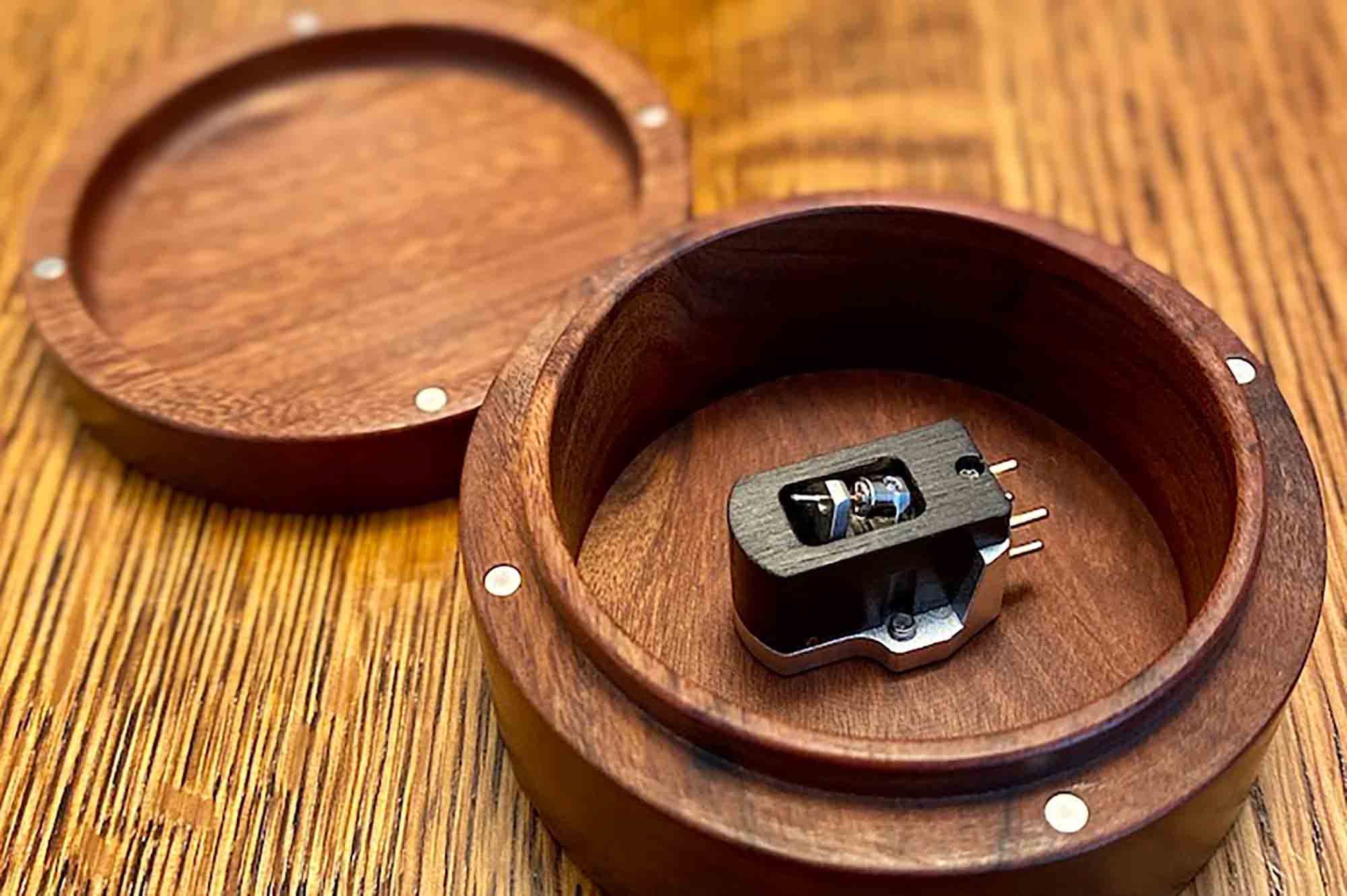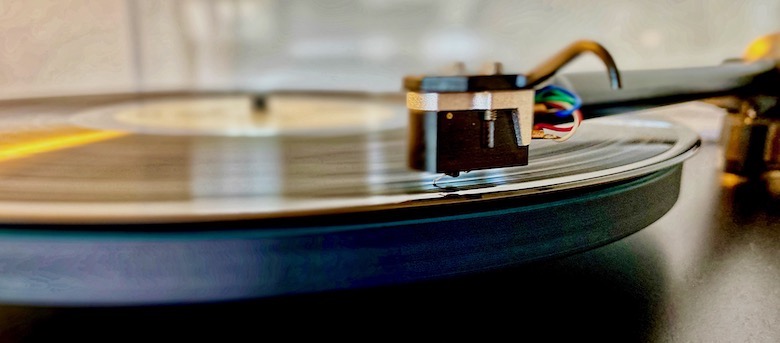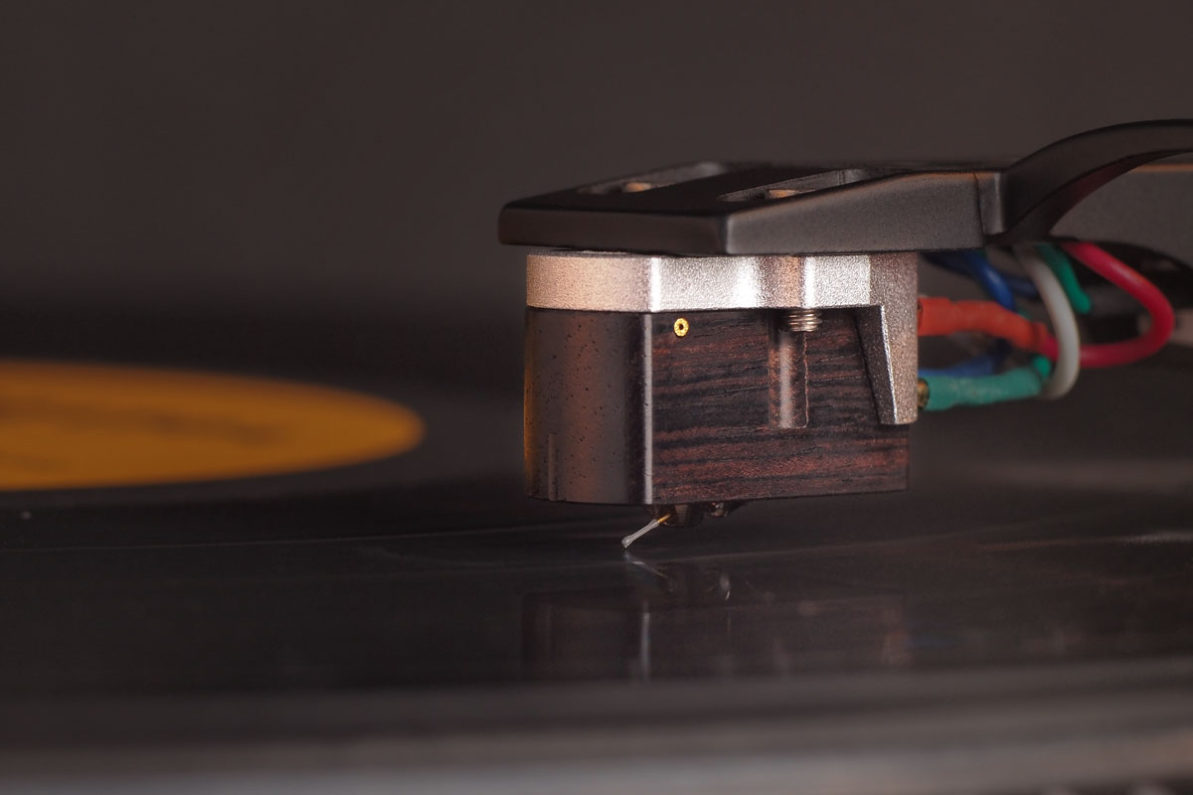MC Cartridge Review: Le Son LS10 MKII

Photo: M.L. Gneier
New MC cartridge reviews are getting rare these days, so we are very proud to share the listening test of the LS10 MKII by M.L. Gneier for TNT-Audio.
TNT-Audio is one of the few advertisement-free audio websites, if not the only one. Available in English and Italian, it features treasures of high-quality audio information along with pictures and reviews of the most high-end audio components from around the World.
The review is shared here with permission of TNT Audio, as it is complete and free from any editing. You can click this link to access the review on TNT-Audio website.
Enjoy!
LeSon LS10 MKII MC Cartridge Review
Can you buy a truly world-class moving-coil cartridge for only $1260 USD?
The superb LeSon LS10 MKII proves that you can.

Photo: M.L. Gneier
Sometimes you get lucky. Toward the end of last year I started to wonder if there were any world-class cartridges being made in China. I wasn’t interested in established companies who elected to build some of their offerings in China. No, I was interested in new companies who conceived and executed their own designs. I sent emails to four firms and each offered a product for a review period. Of the four offers, I selected LeSon.
LeSon means The (absolute) Sound in the native language of co-founder, Gregory de Richemont, a French audiophile living in Shanghai. A fortuitous Richemont met Dr. Ted Tsai, a PhD in Electromechanics and Violin Physics from the University of Texas, at a not-unlikely location; a Hi-Fi show. The two shared a similar vision to develop analog products from the ground up and to build them by hand.
I want to give you a little more of a sense about the people behind the company so I put together this informal interview:
MLG: This question is for both Dr. Tsai and Mr. de Richemont: What was the most inspiring product of your early days in Hi-Fi and what was it about the product that captured your imagination?
Mr. de Richemont:
It was the Thorens TD150 MKII turntable. We had one at my parent’s home, and I remember often lifting the dust cover to examine and touch the forbidden object. The wood plinth, the aluminum knobs, as well as the funny spring suspension and the odd-looking tonearm. It looked like a retro-futuristic machine and I loved it. My parents finally offering it to me for my 14th birthday!
Dr. Tsai:
The Sony MDR-R10 headphones. I admired their design, materials, and build quality. The wood ear cups were the first ever designed using 3D modeling, and were made from a 200-year-old Japanese elm (Zelkova) tree. These headphones were also the first in the world to adopt a bio-cellulose diaphragm with rigidity comparable to that of aluminum. A true work of art and timeless classic!
MLG: This question is addressed more toward Dr. Tsai: What is you mission as a designer? And, how do you balance questions of technology, materials and measurement against the subjective enjoyment of using one of your cartridges?
Dr. Tsai:
Good questions.
I designed many systems in my life, and actually started my career in the military industry. However, I always had a little voice telling me, “search for the good, the true, the beautifulâ€. So after a while I switched to audio related technologies and felt much better with my inner voice. I also need to see that my work brings happiness to people.
What I have in common with Greg is a passion for music and its power to inspire us, and to make us better. Therefore, our mission at Le Son is to give to people a compelling connection to music and its meaning.
My design is intuitive and led by my ongoing research topics. During my PhD in Electro-Mechanical engineering, I chose Violin physics as minor, so I particularly like working with wood when designing musical electro-mechanical devices like phono cartridges.
Technologies and materials improve over time, but the difficulty to create an instrument of outstanding musicality remains the same. There are so many things we still don’t understand! Overall, the key is to provide a compelling sound to human ears. So we trust our ears to fine-tune a design. Technical measurements are important, but final decisions are made according to our ears.
MLG: Mr. de Richemont has told me about the way he met Dr. Tsai. What can you tell me about the steps both of you had to take on the path to creating Le Son? Were there challenges that made creating a company difficult or sometimes seem impossible? How did you overcome them?
Mr. de Richemont:
Creating a company is rather easy; it is creating a brand from scratch that represents a big challenge. You need to go deep inside yourself and get out what you want to bring to the world and how. Ted knows this very well as he already has his own brand ESTI.
Dr. Tsai:
Maybe the most difficult thing is to find the right partner. I met Greg through reel-to-reel playback at a hi-fi show, and we had a magical moment with the public in my showroom. We are old friends now, and we exchanged enough to know we have a similar work philosophy. Le Son is complementary to my brand, as it focuses on analog sound. Only analog!
Mr. de Richemont:
Yes, we stay analog with Le Son. We actually started making moving-coil cartridges as my digital setup was at one point better than my analog one, and I did not want to spend $3000 USD on a cartridge. Ted told me “let’s do itâ€, and this is how the LS10 was born. We launched the LS10 at the Shanghai hi-fi show in 2020, and got noticed by the Editor in Chief of Stereo Sound Magazine. After the interview in the magazine, we gained traction in China.
MLG: What changes are on the horizon for Le Son? Do you envision Le Son staying with cartridges or can you imagine the company branching out into other products like phono stages?
Mr. de Richemont:
As already stated, Le Son will remain analog. Yes, we have our own electronics for two phono stages ready, and we are still experimenting with cabinet design.
Regarding cartridges, we are now focusing on two models: the flagship LS10 MKII and the SL, which is aimed at Technics SL1200 owners who wish to upgrade to the MC world without breaking the bank.
MLG: Finally, what are the most significant differences between the LS 10 MKII and the original LS 10?
Mr. de Richemont:
The Eddy Currents Cancellation (ECC) generator on the LS10 MKII is the most noticeable difference between the two cartridges.
Eddy currents act as magnetic forces against cantilever movements in any phono cartridge. The ECC generator design generates eddy current forces that cancel each other out. When eddy current forces do not affect the cartridge, the output is increased and the sound is fuller than ever.
Dr. Tsai had to redesign numerous internal pieces of the LS10 to create this new design, which represents a significant breakthrough for us.
Back to my review:
LeSon have succeeded grandly with the LS10 MKII MC Cartridge. At $1260 it is nothing short of astounding. Before hearing it, I would have never believed it could possibly be as good as it is, across the board. But, let’s not get ahead of ourselves. There’s a lot to consider here before I get to the LS10 MKII MC, as good as it is. My idea to review a Chinese cartridge flowed indirectly from my increased reliance of digital when it comes to both listening for pleasure and for reviews. There are a lot of factors at play. Today’s digital can be amazingly musical. From the early 90s to now the progress has been truly impressive. Best of all, a lot of the improvements have trickled down from the lofty heights of the high end and become attainable to real-world budgets. But, if you’re my age and you have a significant investment in LPs (sorry, but I’ve never been able to totally accept the word vinyl unless I’m talking about car seats from the 70s) analog still matters. I had an interesting moment recently while talking to noted recording engineer Tony Minasian. He was righteously singing the praises of contemporary digital recording. He pointed out that many liked to refer to the late 50s and 60s as the golden age of recording. Instead, he believes (as I do) that we’re living the golden age right now, when people can make superb recordings with far fewer dollars than were expended in the past. Our agreement ended when he suggested that I had kept all my LPs out of a feeling of nostalgia. I took gentle exception to that and told him that if I could snap my fingers and convert each of my thousands of LPs to properly executed digital I would and then happily sell off my LPs. But, the fact is that I can’t so my LPs, many irreplaceable, are staying put. I’m not romantic about LPs, I just treasure the music they can bring into my head.
The LeSon LS10 MKII is a beautifully finished cartridge. As a long time Dynavector and Sumiko user I’ve never had much of an affinity for wood-bodied cartridges but the LeSon has me reconsidering. Its ebony case is at once all-business and elegant in its look and feel. I’ve used cartridges that have cost double or even triple its cost that do not approach its level of finish and precision of execution. Everything is accomplished without compromise; the cantilever is made from a boron nitride ceramic and the coils of 6N Copper. The nude Shibata stylus looks cleaner and more precisely mounted at 1000x magnification than others I have seen at 10 or 100 times magnification. It’s hard to convey what an impressive example of design, engineering and execution that LeSon has achieved in the LS10 MKII.
I’ve been a stickler about turntable and cartridge set up for a very long time. Back in the day, I occasionally delivered and set up turntables for a local dealer. It was fun to show up at some Beverly Hills mansion with a big box or two and a bunch of tools that made it appear I was preparing to perform surgery. Some tables and arms were tricky but most just required a little patience and a glass or two (but no more) of decent red wine or rye whiskey, depending on the new owner’s palette. When it comes to the LeSon LS10 MKII the only problem is that there wasn’t much for me to do. The cartridge might as well have jumped from its shipping box and mounted itself. Construction helps; the sides are nice and flat and the body is threaded. My tool box and I are a little embarrassed that the nut driver LeSon supplies is a little nicer than mine Oh well. I guess I’ll get over it. Anyway, overhang and alignment were easily set. VTA was nearly perfect with no adjustment needed. Happy days. I ran in the LeSon LS10 MKII in at a VTF of 1.5 grams and eventually settled at 1.9 grams after about 50 hours of playing. I tried, but in the end did not use, the tiny rubber washers LeSon supplies for use under the heads of the mounting bolts. An installation note: The LS10 MKII ships without a stylus guard. When I saw this, I smiled. No training wheels on this bike so take care!
I would be remiss if I didn’t go into the issue of gain. The analog world is a funny place right now. There are some seriously inexperienced folks out there buying turntables and moving coil cartridges. Saying things like moving magnet, moving iron, low-output moving coil, high-output moving coil to these people is sure to induce drowsiness. But the fact is that gain matters and so does loading. The LeSon LS10 MKII is a pretty easy moving-coil to live with its 0.40mV output and preference for 75 ohms or more in terms of loading. I always prefer the sound of sufficient gain but not more. For me, very high gain phono preamps lose subtlety somehow. Short answer; be aware that total gain matters when it comes to a state of the art moving-coil cartridges.
From the first drop of the stylus, LeSon LS10 MKII sounded fantastic and tracked beautifully. High frequencies are extended and effortless. The midrange has an expansiveness that allows you to explore the quality of your LPs while maintaining consistent musicality. You will recognize and easily distinguish your better recordings from those that are not so good but all will be rendered with their essential soul and musicality. After the extended run in the cartridge sounded even more settled and precise. Whether that was an effect of slightly increasing the VTF or the deletion of the rubber washers I cannot be certain.
Mr. de Richemont and I enjoyed a Zoom session that went on for nearly an hour, with both of us losing track of time until our dear friends at Zoom called an unfortunate time out. Before that happened he said something I’d like to paraphrase here. He spoke of some MCs being like F1 cars; so fast and maneuverable as to become unstable. I added that the same goes for airplanes; the more maneuverable a plane is the more (potentially) unstable it is. This means that designers of cars, planes and phono cartridges must seek a balance. More is is not always better. The more I listened to the LS10 MKII the more I thought of the deft balancing act Mr. de Richemont and Dr. Tsai had performed. The LS10 MKII simply sounds right, all the time.
Honestly, it seems rather silly to go on writing about the treble, mids and bass of the LS10 MKII or citing the many records I listened to ad nauseam. Somehow that would feel like a diminishment of this superb transducer. A great car makes you want to drive it all the time to places both new and familiar. A great moving-coil cartridge is much the same. It can reignite your passion for your own LPs and pique your interest in LPs you don’t even own yet. For me, analog generally and LPs in particular bring out a sense of exploration in me I do not quite experience with digital. When you watch a stylus move along the grooves you are literally watching the genesis of the sound your brain perceives. Your eyes see and your ears hear. That’s something that will always be impossible with digital. That’s not a criticism but a state of fact about a medium I enjoy and respect. The LeSon LS10 MKII has banished any notion that my appreciation of LPs was informed by nostalgia. It is a marvelous product that’s truly impressive considering the youth of the company that creates it. What a great time it is when two people like Mr. de Richemont and Dr. Tsai can come together to make something that rivals products costing thousands of dollars more. If you treasure your LPs for the music they bring to your life you owe it to yourself to find a way to listen to a LeSon LS10 MKII. Don’t worry. You are not nostalgic. You simply love music as much as LeSon does.
Listen well, but listen happy, my friends.
M.L. Gneier – TNT USA
Join Our Community!
Subscribe to La Newsletter
Stay informed with the latest news and blog posts from the world of high fidelity sound.
- Category
- News


